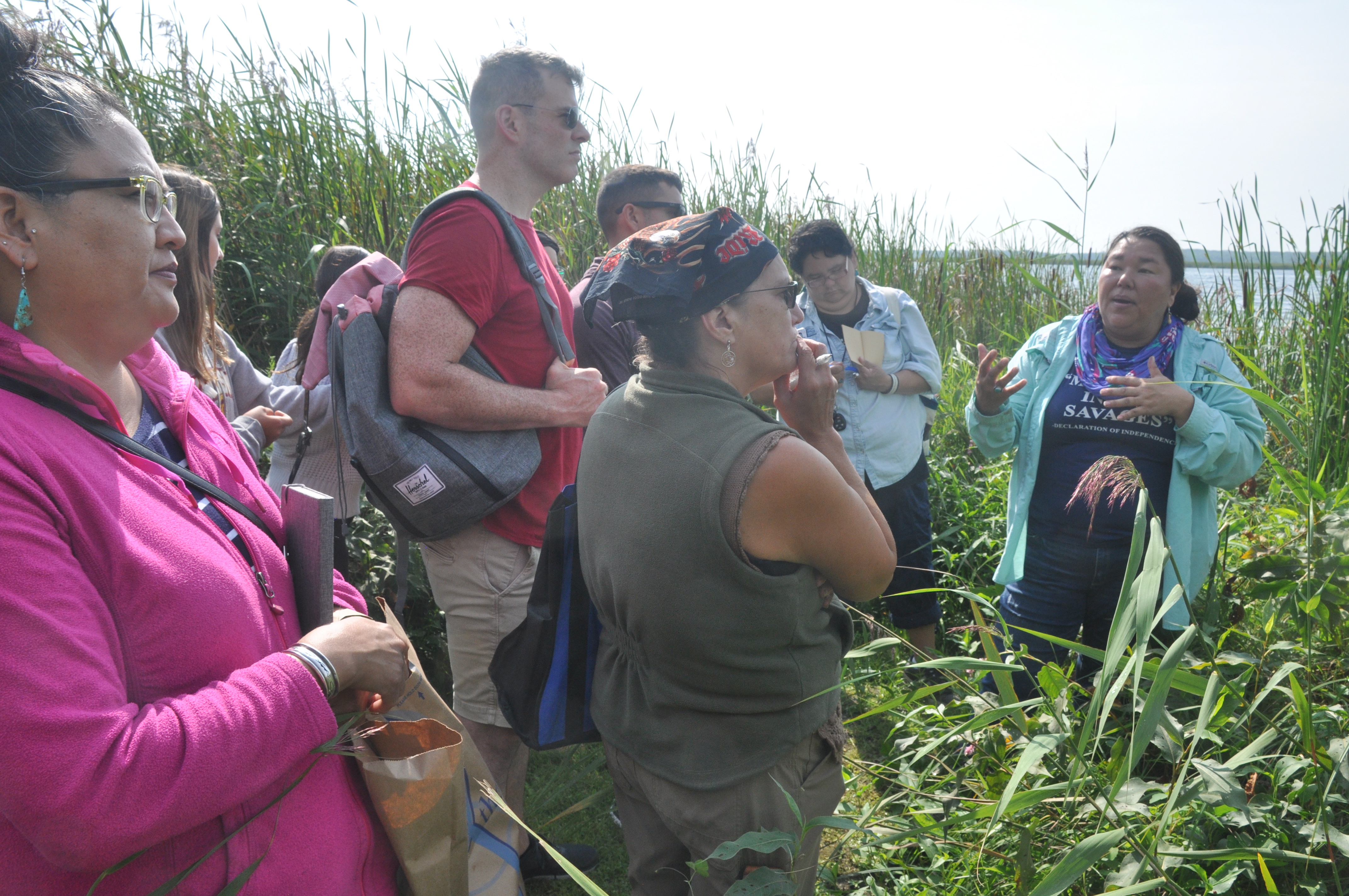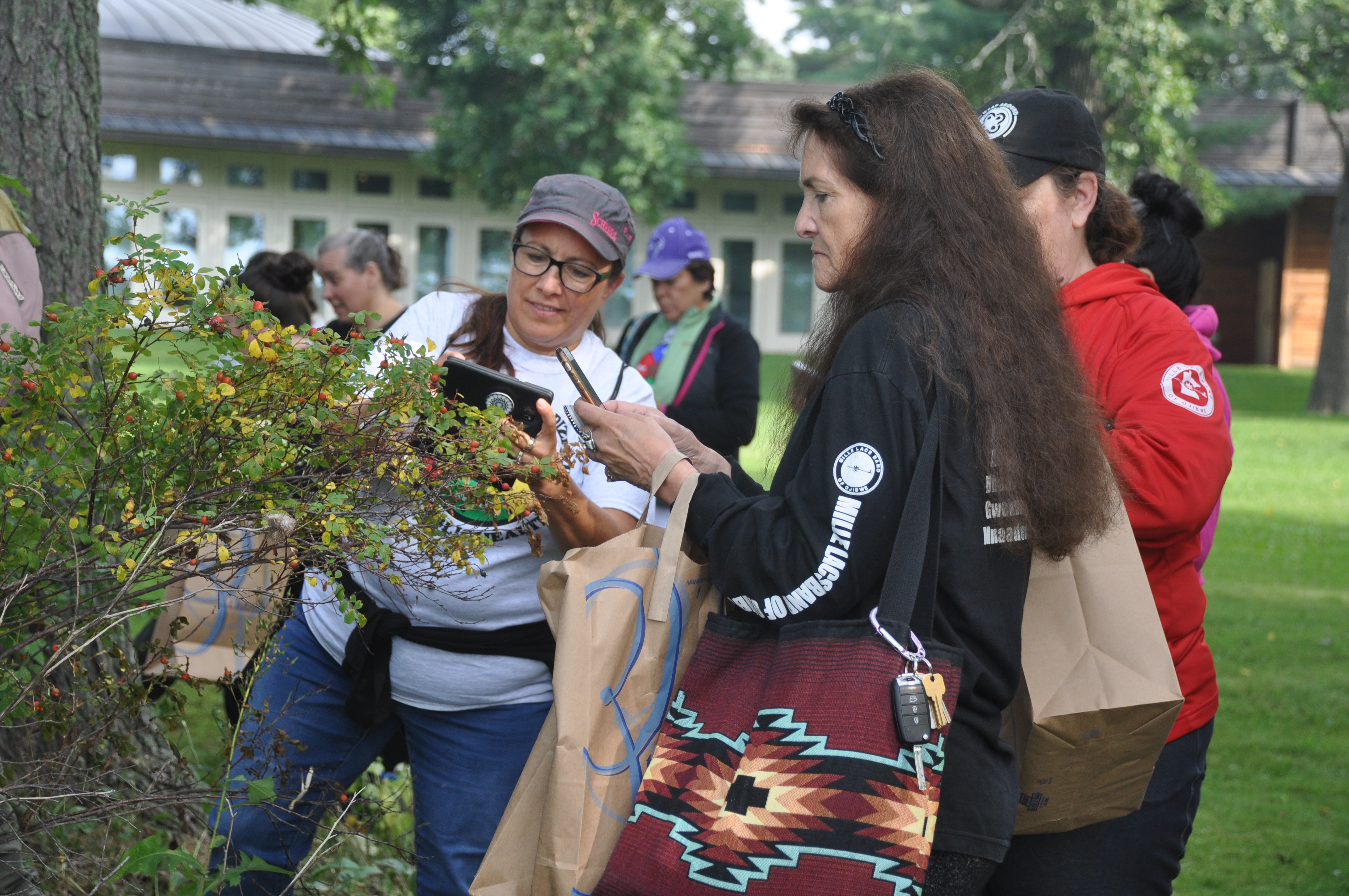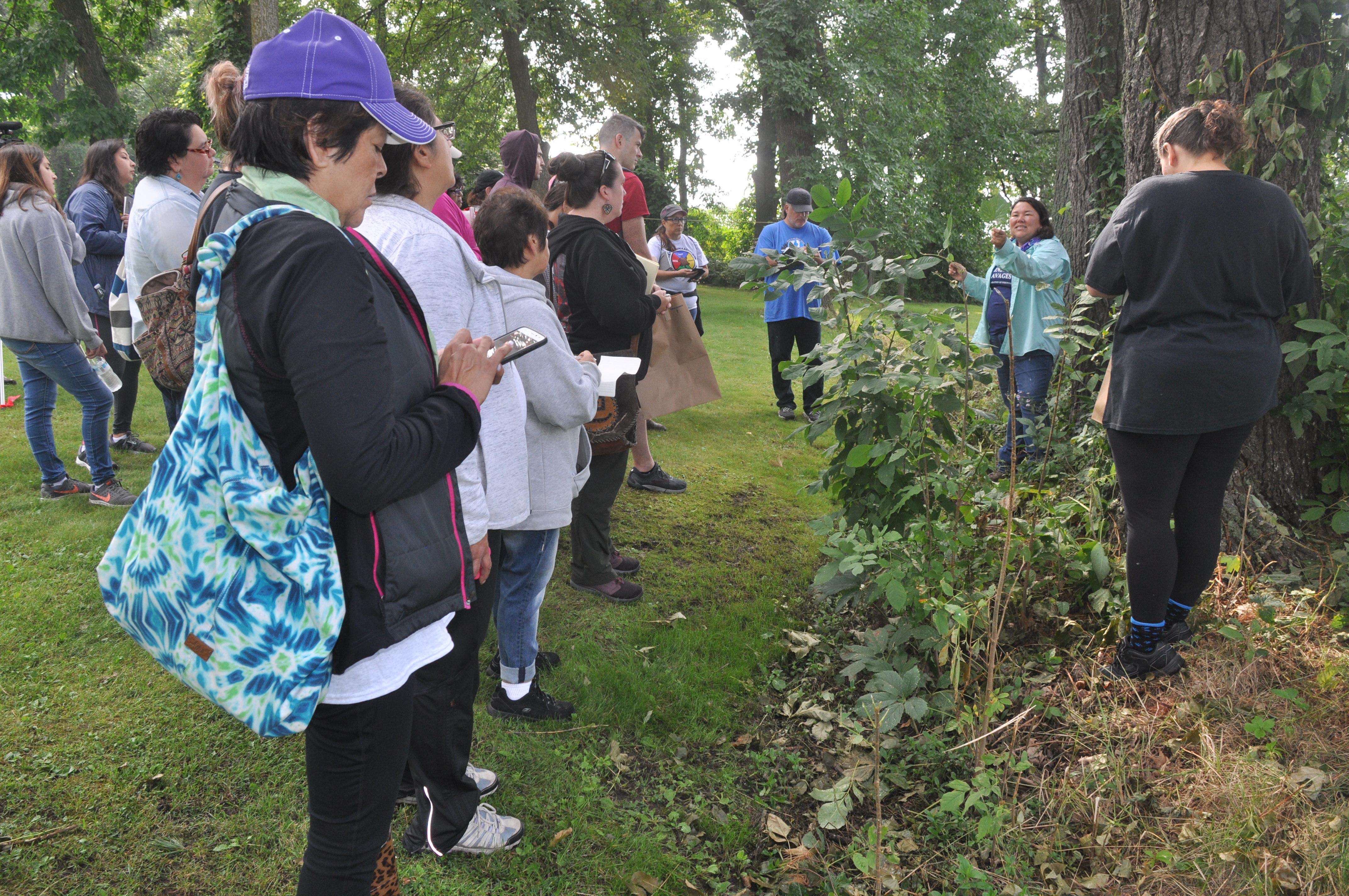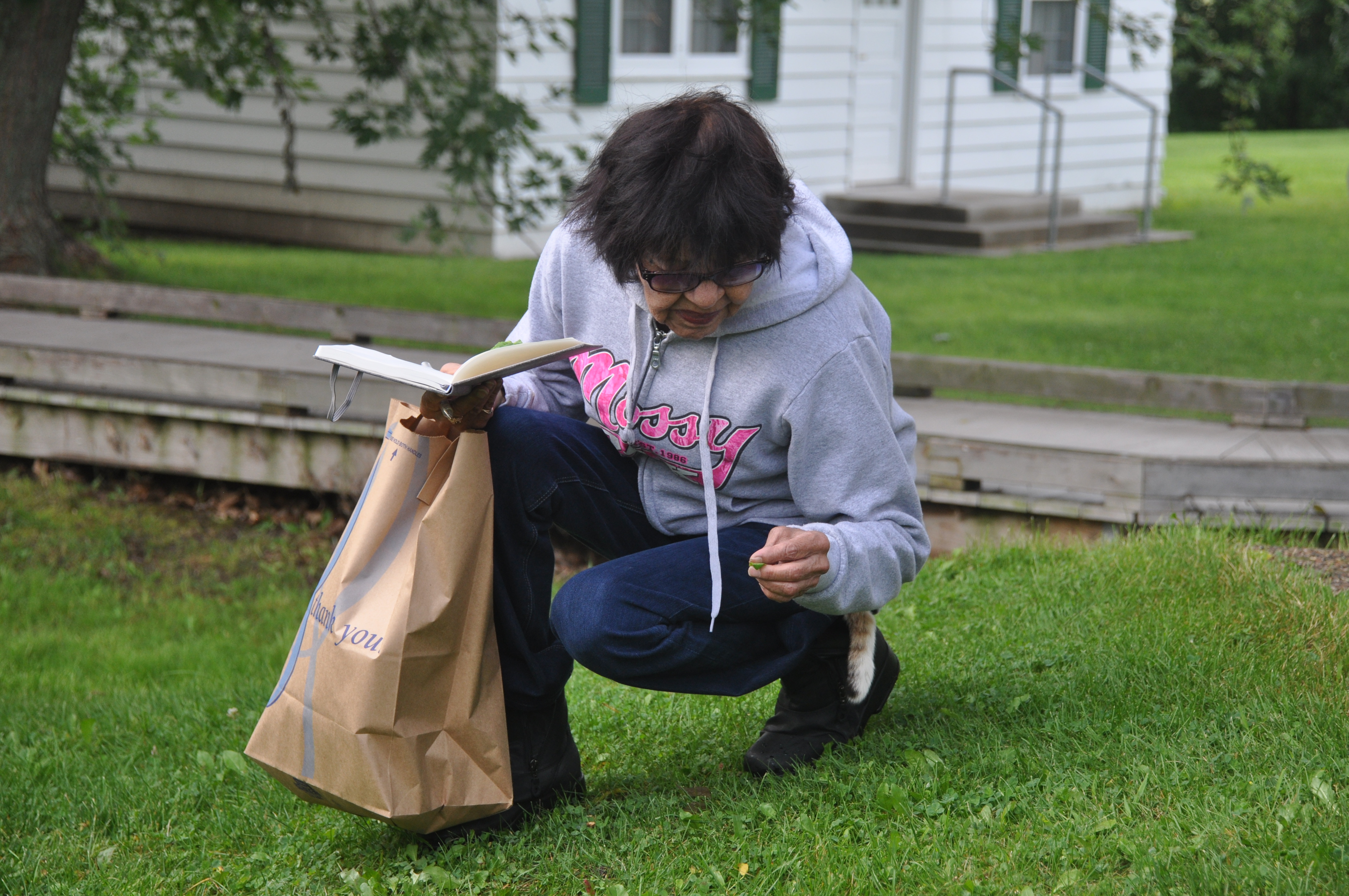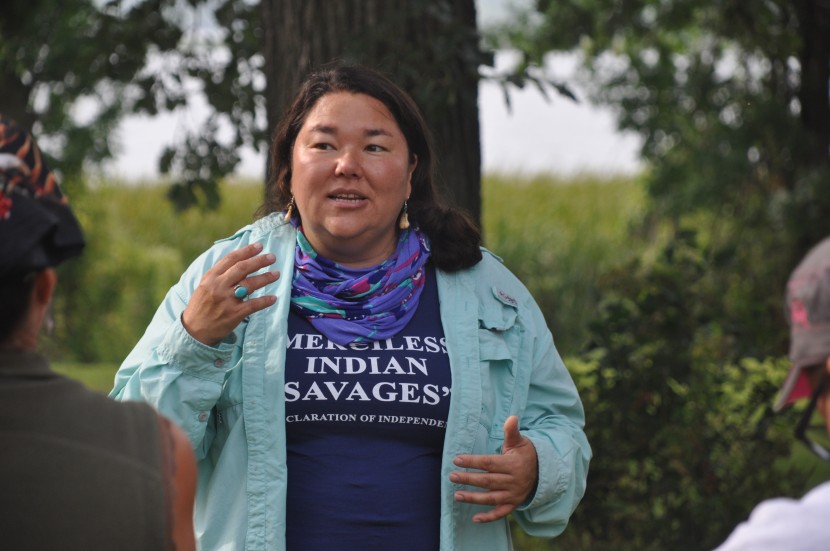
We are literally surrounded by wild foods and traditional medicines; that was one of the main lessons from a weekend conference sponsored by Health and Human Services and led by ethnobotanist Linda Black Elk.
In a two-hour walk on Sunday morning, August 26, Linda pointed out more than 25 plants growing wild around the Mille Lacs Indian Museum. Nearly all of them have nutritional or medicinal uses.
As two dozen foragers scribbled notes, took photos with their phones, put down asemaa, and sampled the forage, Linda rattled off names, uses, and stories about wild mustard and mint, acorns and buckeyes, box elder and birch syrup, grape leaves, chokecherries, elderberry, Solomon’s seal, bittersweet nightshade, and cattails (a whole grocery store in one plant).
She talked about using sage as a household cleanser, digging Indian potatoes with one’s toes, making sumac “koolaid,” and treating poison ivy with jewelweed and oak bark.
The evening before, an even larger group had gathered at Eddy’s to hear a presentation from Linda. According to event organizer and SHIP (Statewide Health Improvement Partnership) coordinator Colleen McKinney, Linda drew the crowd into the discussion. “They were mesmerized,” said Colleen. “I’ve never been to a presentation where the audience was so engaged and there were so many questions.”
Some of the useful plants Linda pointed out are so common that we see them every day.
• Dandelion: The whole plant is edible, from the flower, to the leaves (nutritional addition to salad) to the roots (you can roast them and make a coffee-like drink).
• Plantain: This common lawn plant is edible (the seed stalks are high in fiber) and can be used to treat burns.
• Yarrow: Yarrow makes a tasty tea or a blood coagulant that can help stop bleeding. Linda once used it to treat a gash in her cousin’s leg. When they got to the hospital, the doctor asked, “How did you cauterize his wound?”
• Burdock: This common plant with big rhubarb-like leaves has all kinds of uses. It can help clear up skin problems, and it also cleans the blood, resulting in better kidney and liver health. Linda once sent burdock tea to a friend who was sick from eating fish that was high in mercury. Her doctor had said she would need medical treatment. Within hours, she was feeling more energetic, and at her next visit, her doctor said treatment was unnecessary.
Other useful plants are common garden weeds, like purslane, pigweed, and lamb’s quarter, which is a type of quinoa.
Others were lesser known, like hog peanut, a member of the bean family that produces tasty beans just below the ground. The Lakota called them “mouse beans” because the mice would cache the beans in little balls, which people would raid, making the harvesting process easier.
Stinging nettles, which were used to make ropes that were woven into gillnets, can also be made into tea, used to treat arthritis, and even eaten — after several rinses to remove the chemicals that cause the sting.
During the Sunday afternoon session, participants learned to make salve from plants, oils, and beeswax.
Colleen is hoping to bring Linda back to Mille Lacs for more events.
Linda is also working with the Department of Natural Resources on a guide to local plants.
About Linda
Linda Black Elk (Catawba Nation) is an enthnobotanist specializing in teaching about culturally important plants and their uses as food and medicine. She works as Director of Traditional Medicine at the Mni Wiconi Clinic and Farm, which is a free, integrative healing center of the Standing Rock Nation that focuses on decolonizing medicine
and diet for Indigenous peoples. Through this clinic, Linda works to protect food sovereignty, traditional plant knowledge, and environmental quality as an extension of her long-term fight against extractive industries. She has written for numerous publications, and is the author of “Watoto Unyutapi,” a field guide to edible wild plants of the Dakota people. Linda is the mother to three Lakota boys and is a lecturer at Sitting Bull College at Standing Rock.
SHIP Grant: Using Culture to Create Health
Despite adversity that Native people in the United States face, Indigenous cultural knowledge remains intact in Minnesota communities. With support from the Minnesota Department of Health (MDH), innovative and culturally appropriate strategies are used to advance health equity for American Indians through the Tribal SHIP and Tribal Tobacco Grants. MDH supports tribal nations to implement practice-based strategies and integrate culture into commercial tobacco prevention and cessation work as well as obesity prevention efforts. Grant focus areas include increasing access to healthy and traditional foods, providing opportunities for active living (such as Indigenous activities and dance), and reducing the use of commercial tobacco and exposure to secondhand smoke.
Source: health.state.mn.us/divs/oshii/ship/pdfs/tribal.pdf.
